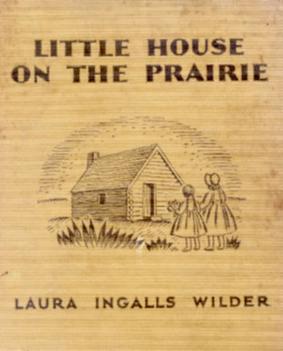
The Little House on the Prairie books comprise a series of American children's novels written by Laura Ingalls Wilder. The stories are based on her childhood and adolescence in the American Midwest between 1870 and 1894. Eight of the novels were completed by Wilder, and published by Harper & Brothers in the 1930s and 1940s, during her lifetime. The name "Little House" appears in the first and third novels in the series, while the third is identically titled Little House on the Prairie. The second novel, meanwhile, was about her husband's childhood.

Ethel Florence Lindesay Richardson, known by her pen name Henry Handel Richardson, was an Australian author.

Janet Gertrude "Nettie" Palmer was an Australian poet, essayist and Australia's leading literary critic of her day. She corresponded with women writers and collated the Centenary Gift Book which gathered together writing by Victorian women.

Are You There God? It's Me, Margaret. is a middle-grade novel by American writer Judy Blume, published in 1970. Its protagonist, Margaret Simon, is a sixth-grader who grows up without a religious affiliation because of her parents' interfaith marriage. This contemporary realistic novel was popular with middle-grade readers in the 1970s for its relatable portrayal of a young girl confronting early-adolescent anxieties, such as menstruation, brassieres and boys. The recipient of national honors and book awards, the novel has been challenged for its frank discussion of sexual and religious topics.

Sigrid Madeline Thornton is an Australian film and television actress. Her television work includes Prisoner (1979–80), All the Rivers Run (1983), SeaChange (1998–2019) and Wentworth (2016–2018). She also starred in the American Western series Paradise (1988–91). Her film appearances include Snapshot (1979), The Man from Snowy River (1982), Street Hero (1984) and Face to Face (2011). She won the AACTA Award for Best Guest or Supporting Actress in a Television Drama for the 2015 miniseries Peter Allen: Not the Boy Next Door.
Dorothy Auchterlonie was an English-born Australian academic, literary critic and poet.
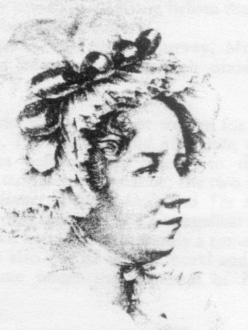
Mary Martha Sherwood was a nineteenth-century English children's writer. Of her more than four hundred works, the best known include The History of Little Henry and his Bearer (1814) and the two series The History of Henry Milner (1822–1837) and The History of the Fairchild Family (1818–1847). Her evangelicalism permeated her early writings, but later works cover common Victorian themes such as domesticity.
Susannah Fowle is an Australian actress of stage and screen.

Chinese Cinderella: The Secret Story of an Unwanted Daughter (Wishbones) is a non-fiction book by Chinese-Canadian physician and author Adeline Yen Mah describing her experiences growing up in China. First published in 1999, Chinese Cinderella is a revised version of part of her 1997 autobiography, Falling Leaves, presented as a narrative in the style of a fictional novel. Her mother died after giving birth to her and she is known to her family as the worst luck ever. Her father remarries a woman who stays at home and looks after the children for a living while treating Adeline and her step-siblings harshly and spoiling her own children with many luxurious things. An extract of this book is also part of the anthology of Edexcel English Language IGCSE new specification.

Seven Little Australians is a classic Australian children's literature novel by Ethel Turner, published in 1894. Set mainly in Sydney in the 1880s, it relates the adventures of the seven mischievous Woolcot children, their stern army father Captain Woolcot, and faithful young stepmother Esther.
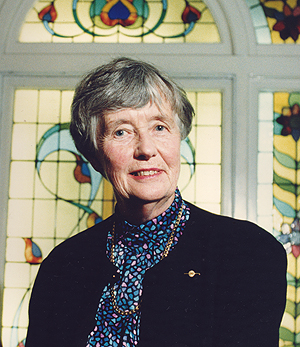
Dame Leonie Judith Kramer, was an Australian academic, educator and professor. She is notable as the first female professor of English in Australia, first woman to chair the Australian Broadcasting Corporation and the first female chancellor of the University of Sydney. She was made a Dame Commander of the Order of the British Empire and a Companion of the Order of Australia.

The Fortunes of Richard Mahony is a three-part novel by Australian writer Ethel Florence Lindesay Richardson under her pen name, Henry Handel Richardson. It consists of Australia Felix (1917), The Way Home (1925), and Ultima Thule (1929). It was collected in 1930 under the title by which it is now best known. Its publisher, William Heinemann Ltd, claimed on the jacket to the 1965 edition, "This is now recognized as one of the greatest novels in the English language." It was acclaimed for its rich characterizations and then-startling depiction of mental illness attacking an otherwise respectable person, while his much-younger wife, who does not think herself clever, must become resourceful with a high-level of uncomfortable capability. In recent years, it has been recognised as a graphic description of the onset and evolution of young onset dementia caused by neurosyphilis, the condition from which her father died.

Marijane Agnes Meaker was an American writer who, along with Tereska Torres, was credited with launching the lesbian pulp fiction genre, the only accessible novels on that theme in the 1950s.

The Queenscliff High Light, also variously known as the Black Lighthouse, Fort Queenscliff Lighthouse or Shortland Bluff Light, stands in the grounds of Fort Queenscliff in Queenscliff, Victoria, Australia. It is one of four black lighthouses in the world, and the only one in the Southern Hemisphere. Together with the nearby white Queenscliff Low Light, it was built in 1862 to replace the former sandstone lighthouse of 1843 on the same site which was underpowered and deteriorating.
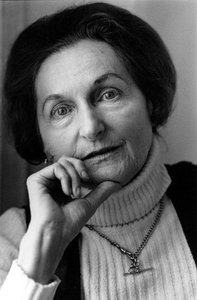
Jessica Margaret Anderson was an Australian novelist and short story writer. Born in Gayndah, Anderson lived the bulk of her life in Sydney apart from a few years in London. She began her career writing short stories for newspapers and drama scripts for radio, especially adaptations of well-known novels. Embarking on her career as a novelist relatively late in life - her first novel was published when she was 47 - her early novels attracted little attention. She rose to prominence upon the publication of her fourth novel, Tirra Lirra by the River, published in 1978. Although she remains best known for this work, several of her novels have garnered high acclaim, most notably The Impersonators (1980) and Stories from the Warm Zone and Sydney Stories (1987), both of which have won awards. She won the Miles Franklin Literary Award twice, and has been published in Britain and the United States. Jessica Anderson died at Elizabeth Bay, New South Wales in 2010, following a stroke. She was the mother of Australian screenwriter Laura Jones, her only child.

Camilla Dickinson is a 1951 novel by Madeleine L'Engle about the first romance of two teenagers from dysfunctional families in New York City. In 1965, it was republished in slightly different form under the title Camilla.
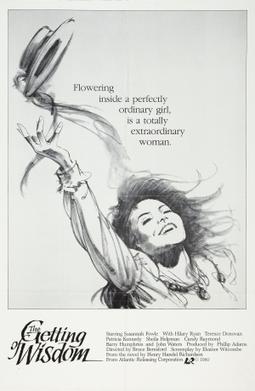
The Getting of Wisdom is a 1977 Australian film directed by Bruce Beresford and based on the 1910 novel of the same title by Henry Handel Richardson.
Arthur Vincent Green was an Anglican bishop in the late 19th and early 20th centuries, who founded two theological colleges.

Little Fires Everywhere is the second novel by the American author Celeste Ng. It was published in 2017 by Penguin Press. The novel takes place in Shaker Heights, Ohio, where Ng grew up. The novel focuses on two families living in 1990s Shaker Heights who are brought together through their children. Ng described writing about her hometown as "a little bit like writing about a relative. You see all of the great things about them, you love them dearly, and yet, you also know all of their quirks and their foibles."

Florence Emily Green was an Australian headmistress. She was the founding headmistress at the New England Girls' School in New South Wales.

















